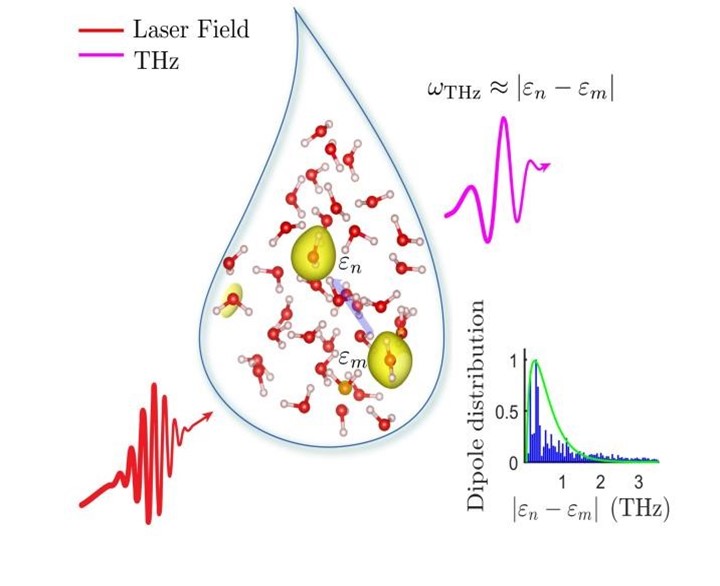A research group led by BIAN Xuebin from the Innovation Academy for Precision Measurement Science and Technology (APM) of the Chinese Academy of Sciences (CAS), has proposed a shift-current model for terahertz wave generation in liquids, solving the long-time mystery of the microscopic mechanism.
The research findings were published in the Proceedings of the National Academy of Sciences (PNAS).
Terahertz waves have a wide range of applications in areas such as communications and imaging. The nonlinear interaction between intense ultrafast lasers and matter is one of the important methods for generating terahertz waves. In 2017, experiments discovered that when the thickness of a liquid film or the diameter of a liquid beam is reduced to the micrometer scale, the radiation of terahertz waves becomes significantly greater than the absorption, thus opening a new direction for the study of liquid terahertz waves.
In recent years, there have been numerous experimental reports in the field of liquid terahertz waves. However, many of the phenomena observed in experiments differ significantly from those obtained in other media. The theoretical study of complex and disordered liquid systems has always been a challenge, and researchers have been limited to explaining some macroscopic effects in experimental results under high laser intensity based on previous plasma models combined with interface effects.
Recently, researcher BIAN Xuebin and his Ph.D student LI Zhengliang from APM, proposed a shift-current model for generating liquid terahertz waves. This model can systematically explain the series of abnormal phenomena observed in the experiments mentioned above. The physical picture of this microscopic mechanism model is shown in Figure 1: The disordered structure of the liquid leads to the localization of electron wave packets. At the same time, the valence electrons of different molecules experience energy shifts due to environmental effects. Under the action of intense laser fields, outer electrons of different molecules undergo transitions, generating asymmetric shift currents. The energy differences of these transitions fall within the terahertz energy range, leading to the radiation of terahertz waves. Their research also indicates that nuclear quantum effects play a crucial role and predicts that terahertz radiation can be used to study isotopic effects in liquids.

Fig. 1 Schematic Diagram of Liquid Terahertz Wave Generation
This study was supported by the National Key Research and Development Program, the National Natural Science Foundation of China, and the CAS Project for Young Scientists in Basic Research.
Link to the article:https://www.pnas.org/doi/10.1073/pnas.2315297121
